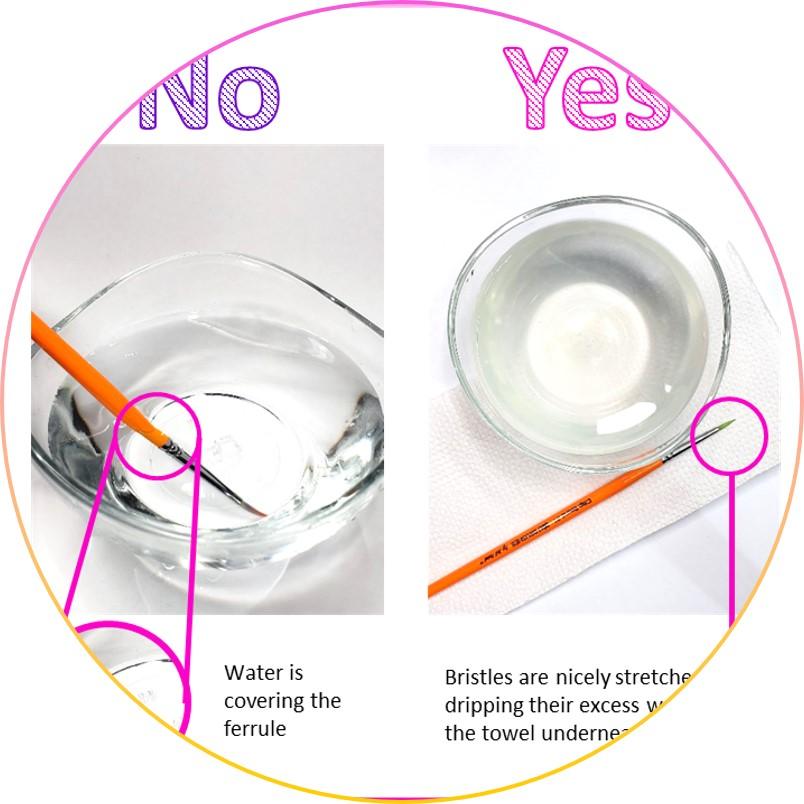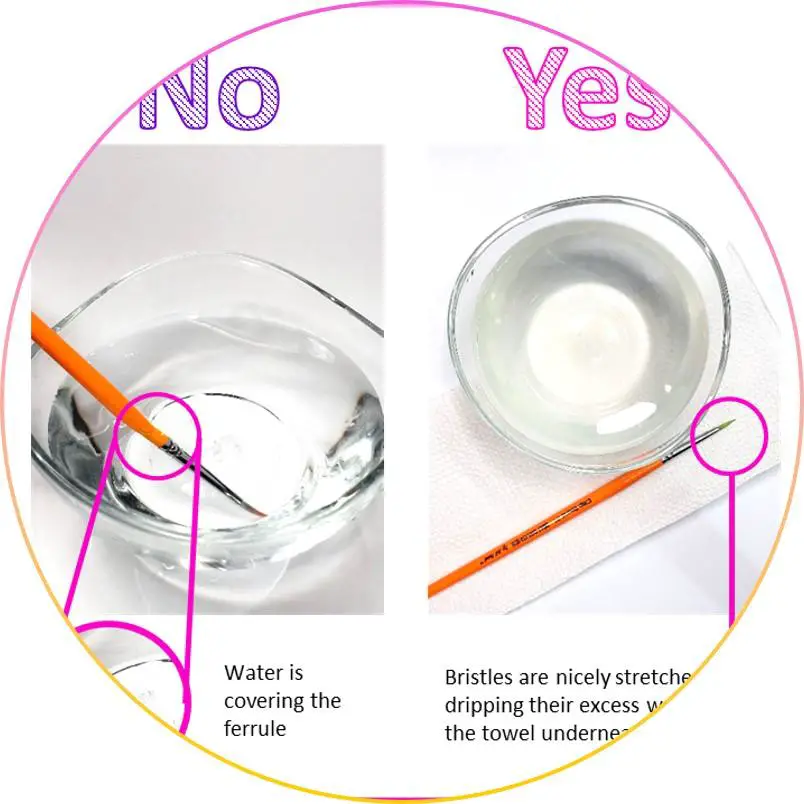Face painting is a fun activity loved by kids and adults alike, but the task of cleaning the brushes can be daunting. Dirty brushes not only affect the quality of the makeup but can also lead to skin infections. In this article, we will guide you through the process of cleaning your face painting brushes to keep them in top condition and ensure safe and hygienic application every time.
Cleaning face painting brushes is not only essential for maintaining hygiene but also for prolonging their lifespan. A well-maintained brush will last longer and provide better results during application. With our step-by-step guide, you can easily clean your face painting brushes at home with simple tools and ingredients. So, let’s get started and learn how to keep your brushes clean and healthy for your next face painting session.
To clean face painting brushes, follow these steps:
- First, rinse the brush under warm water to remove any excess paint.
- Next, add a small amount of gentle soap to your hand or a brush cleaning solution.
- Swirl the brush in the soap or solution until it lathers.
- Rinse the brush thoroughly under warm water until the water runs clear.
- Gently squeeze the bristles with a clean towel to remove any excess water.
- Reshape the bristles with your fingers and lay the brush flat to dry.
Cleaning your face painting brushes regularly will help them last longer and maintain their shape for your next use.

How to Clean Face Painting Brushes?
Face painting is an art that requires precision and the right tools. While painting, it is essential to keep your brushes clean to ensure the longevity and quality of your artwork. In this article, we will discuss some tips on how to clean face painting brushes effectively.
1. Gather the Supplies
The first step in cleaning your face painting brushes is to gather the necessary supplies. You will need lukewarm water, mild soap or brush cleaner, a clean towel or cloth, and a brush holder. It is essential to use mild soap or brush cleaner to avoid damaging the bristles.
To clean your brushes effectively, you can use a brush holder to keep them organized and upright. This allows the water and soap to penetrate the bristles, ensuring a thorough cleaning.
2. Rinse the Brushes
The next step is to rinse your brushes under lukewarm water. Avoid using hot water as it can damage the bristles. Rinse your brush until the water runs clear, and all the paint is removed from the bristles.
3. Wash the Brushes
After rinsing, apply a small amount of mild soap or brush cleaner to the bristles. Gently massage the bristles with your fingers to create a lather. Ensure that you clean the entire bristle, including the base.
4. Rinse Again
Once you have finished washing your brushes, rinse them thoroughly under lukewarm water. Ensure that all the soap or brush cleaner is removed from the bristles.
5. Dry the Brushes
After rinsing, gently squeeze the excess water from the bristles with a clean towel or cloth. Avoid twisting or pulling the bristles as this can damage them. Then, reshape the bristles and leave them to dry in a brush holder or on a clean, dry surface.
6. Deep Clean the Brushes
If your brushes have been heavily soiled, you may need to deep clean them. To do this, mix a small amount of mild soap or brush cleaner with lukewarm water in a bowl. Dip your brush in the solution and swirl it around gently. Rinse the brush under lukewarm water and dry as usual.
7. Store the Brushes Properly
Once your brushes are dry, store them properly to maintain their shape and quality. Use a brush holder or wrap them in tissue paper to protect the bristles.
8. Benefits of Cleaning Your Brushes
Cleaning your face painting brushes regularly offers many benefits. It helps to prolong the life of your brushes, ensures that your artwork is of high quality, and prevents the spread of bacteria.
9. Cleaning vs. Replacing Brushes
While cleaning your brushes is essential, there may come a time when you need to replace them. If your brushes are frayed or damaged, they may no longer be usable. It is essential to replace them to ensure the quality of your artwork.
10. Conclusion
In conclusion, cleaning your face painting brushes regularly is essential to ensure the quality and longevity of your artwork. By following the tips outlined in this article, you can keep your brushes in excellent condition and produce high-quality artwork. Remember to store your brushes properly and replace them if necessary to maintain their quality.
Frequently Asked Questions
Face painting is a fun activity enjoyed by many, but it’s essential to keep your brushes clean to avoid contamination and maintain their quality. Here are some common questions and answers about how to clean face painting brushes.
How often should you clean your face painting brushes?
It’s crucial to clean your face painting brushes after every use to prevent the paint from drying and hardening on the bristles. Leaving the paint on the brushes can damage them and cause them to lose their shape, making it challenging to create precise lines and details.
To clean your brushes, rinse them thoroughly with warm water and gentle soap, then shape them back to their original form and let them air-dry. Avoid soaking them in water or leaving them in a standing position, as this can weaken the glue holding the bristles together.
What should you use to clean your face painting brushes?
It’s best to use a gentle soap or shampoo to clean your face painting brushes. Avoid using harsh chemicals or alcohol-based products, as these can damage the bristles and affect the quality of your brushes.
You can also use a brush cleaner specifically designed for face painting brushes. These cleaners are formulated to dissolve the paint and leave your brushes clean and soft. Always follow the manufacturer’s instructions and avoid using too much product, as this can lead to residue buildup.
How do you remove stains from face painting brushes?
If your face painting brushes have stubborn stains, you can use a mixture of warm water and vinegar or baking soda to remove them. Soak the bristles in the solution for a few minutes, then rinse them thoroughly with warm water and let them air-dry.
Avoid using bleach or other harsh chemicals to remove stains, as these can damage the bristles and affect the quality of your brushes.
How do you store your face painting brushes?
It’s essential to store your face painting brushes properly to maintain their quality and prevent contamination. After cleaning them, shape the bristles back to their original form and let them air-dry completely before storing them.
You can store them in a brush holder or a zippered case to protect them from dust and dirt. Avoid storing them in a standing position or airtight containers, as this can cause the bristles to lose their shape or develop mold.
When should you replace your face painting brushes?
With proper care and maintenance, your face painting brushes can last for a long time. However, if you notice that the bristles are frayed, split, or losing their shape, it’s time to replace them.
Using damaged brushes can affect the quality of your work and make it challenging to create precise lines and details. Always invest in high-quality brushes and replace them as needed to ensure the best results.
How to clean face painting brushes and sponges 💦
In conclusion, taking care of your face painting brushes is essential to maintain their quality and longevity. Clean brushes ensure that your artwork is beautiful and safe for your clients. By following these simple steps and using the right products, you can keep your brushes in top condition and avoid any harmful bacteria or infections.
Remember, always clean your brushes immediately after use to prevent any paint from drying and hardening on the bristles. Use a gentle soap or brush cleaner and warm water to thoroughly clean each brush. Rinse well and reshape the bristles before letting them air dry completely.
Investing in high-quality brushes and taking proper care of them will not only improve the quality of your work but also save you money in the long run. So, take the time to clean your brushes properly and enjoy the benefits of beautiful, long-lasting artwork.

